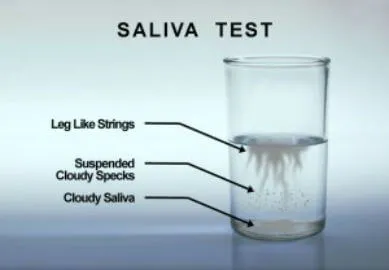
- Share on Facebook703
- Share on Pinterest
- Share on Twitter
You have probably heard the word candida but may not be exactly sure about what it is. Candida is a fungus, which is actually a form of yeast. Everyone has a small amount of yeast living in their mouth and intestines. It serves an important role when it comes to digestion and nutrient absorption, but, when it overpopulates it actually breaks down the walls of the intestines and seeps into the bloodstream, where it releases toxins. This leakage can cause a number of health conditions ranging from digestive disturbances to depression.
How Does Candida Get Out of Hand?
We all have a certain amount of healthy gut bacteria which works to keep yeast levels healthy. However, many things can lead to candida getting out of control and overpowering the healthy bacteria. The good news is, we have control over over most, if not all, of the factors contributing to it, which includes:
Eating a diet loaded with refined sugar and carbohydrates – A diet rich in sugar or anything that converts to sugar such as processed foods made with refined grains and alcohol all encourage yeast growth. The sugar creates a perfect environment for the yeast to thrive and they quickly multiply.
Taking oral contraceptives – Taking a birth control pill causes an upset in hormones which disrupts the good bacteria in the gut.
Living a very high stress life – When you are stressed, the body releases cortisol, a hormone that depresses your immune system and increases blood sugar. The yeast feeds on the increased sugar and the immune system is too weak to stop it and growth gets out of hand. In addition, if you remain stressed for a long period of time, your adrenal glands become ineffective and your immune system can be further compromised.
Antibiotics – While antibiotics effectively kill the harmful bacteria that make you sick, they also kill the friendly bacteria in your digestive system. This leaves you defenseless to fungus and yeast which can quickly take your gut over.
How Do I Know if I Have a Yeast Problem?
Many people have a variety of the symptoms of candida overgrowth but fail to connect the dots and put them all together. Here are just a few of the warning signs to watch out for:
- Fungal infections on skin or nails – athletes foot or toenail fungus
- Fatigue or fibromyalgia
- Constipation, bloating or diarrhea
- Bad breath
- Dry mouth
- Joint pain
- Numbness
- Hair loss
- Headaches
- PMS
- Heartburn
- Burning eyes
- Lack of impulse control
- Hyperactivity
- Poor concentration, brain fog, lack of focus, ADD, ADHD
- Autoimmune disease such as rheumatoid arthritis, lupus, ulcerative colitis or multiple sclerosis
- Mood swings, anxiety or depression
- Strong cravings for sugar or refined carbohydrates
- Skin conditions such as eczema, psoriasis, rashes or hives
- Seasonal allergies or itchy ears
- Urinary tract infections, vaginal or rectal itching
Top 8 Foods That Encourage Yeast Overgrowth
The following foods can create and make an already existing yeast problem much worse:
- Breads
- Pizza
- Fast Food
- Dairy
- Soda
- Juice
- Alcohol
- Fruit
Spit Test for Yeast
Yeah, we know, it sounds a little gross but a spit test offers a really good analysis of what is going on inside your body and may be a sign that yeast is a problem. The best time to take this test is as soon as you wake up in the morning, before you even get out of bed.
Here is how you do it:
- Gather as much spit as possible from in your mouth.
- Spit into a clear glass with room temperature filtered water.
- Watch carefully.
- The saliva will float at first and watch to see if there are thin projections extending downward into the water after 15 minutes or so. They may look like hairs or strings. If this happens you may have a candida overgrowth problem.
- If your saliva is very cloudy and sinks to the bottom within a few minutes or parts of the saliva slowly sink, yeast overgrowth is a possibility. The particles are yeast colonies which band together.
- If your spit is still floating after about an hour, it is likely that your yeast is under control.
I have yeast, what now?
According to the National Candida Center, if you have symptoms and your spit test is positive for yeast, it is a pretty good indication that you have a candida overgrowth problem. The first step in addressing the problem is to adjust your diet.
Eliminate all processed foods and sugar and begin eating only wholesome, organic foods if possible. The following foods also help the body heal from the assault of candida overgrowth and encourage the proliferation of healthy bacteria:
Coconut Oil – This tropical treasure has strong antifungal properties which will kill the bad bacteria and support immune system functioning. Replace your other cooking oils for coconut oil and add liberally to foods or your coffee. Aim for 2 tablespoons daily to start.
Garlic – Garlic also has strong antifungal properties and will destroy unfriendly bacteria. while encouraging the growth of good bacteria. It detoxifies and encourages healthy liver and colon functioning. Use garlic liberally to jazz up your food or chew freely on 2-3 cloves per day. Note: raw garlic is far superior in its efficacy.

Seaweed – It may not be to appealing to look at but seaweed is a highly nutrient dense food that can fight against yeast overgrowth. Many times, persons with yeast suffer from hyperthyroidism and seaweed is rich in iodine which helps balance the thyroid gland. In addition, seaweed is a detoxifier and helps to flush toxins out of the body while cleaning the digestive system. Eat fresh seaweed or take high quality kelp supplements for best results.
Pumpkin Seeds – These tiny seeds are packed with omega-3 fatty acids which have antiviral and antifungal properties. They help to reduce the inflammation caused by yeast and fight depression as well. Add pumpkin seeds to your cereal, salads or even eat them as a tasty snack.
Ginger – Ginger is a powerful detoxifier that increases circulation and flushes toxins out of the liver while supporting the immune system. It helps reduce intestinal gas and soothes inflammation from yeast overgrowth. Make ginger tea by grating a 1-inch piece of ginger root and adding it to 2 cups of boiling water and a fresh slice of lemon.
Once you get your diet under control and introduce foods that fight the bad bacteria you can consider taking a high quality probiotic or eating a little bit of fermented foods daily to keep your healthy bacteria count in good order.
-The Alternative Daily
- Share on Facebook703
- Share on Pinterest
- Share on Twitter

